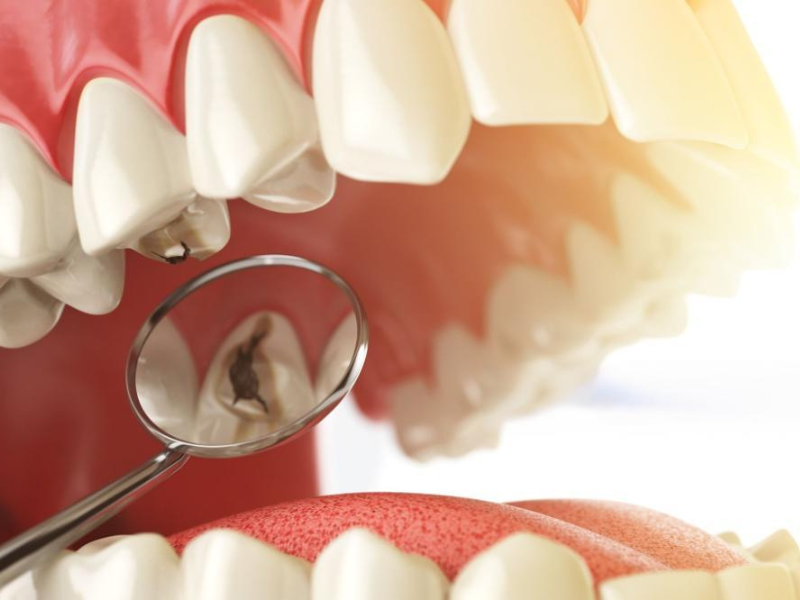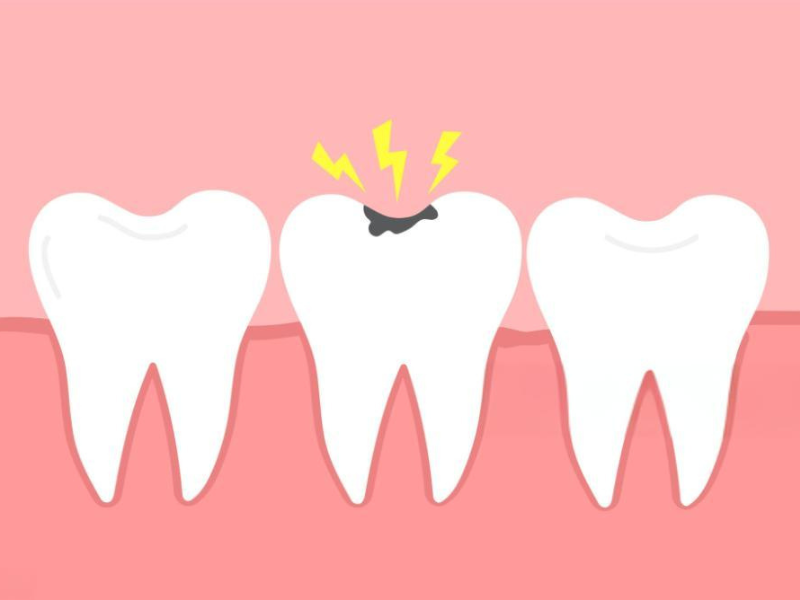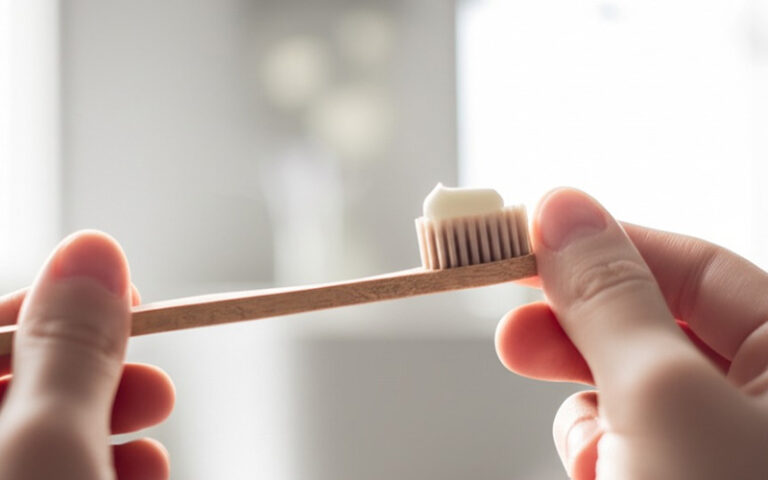
Do Dental Fillings Hurt? A Simple Explanation
“Is getting a cavity filled going to hurt?” It’s a fear many of us have. We worry about the drill, the needle, and the pain. The truth is, modern dental care has made getting a filling much easier and more comfortable than you might think. This article is for anyone who is worried about pain from a dental filling. I will walk you through the entire process, step by step. We will talk about what a cavity is, why you need to fix it, and what really happens at the dentist’s office. By the end, you’ll see that the fear of the unknown is often worse than the dental procedure itself.
Table of Contents
What Is a Tooth Cavity, Really?
Let’s start with the basics. What is a cavity? It is not just a random hole that appeared in your tooth. But it’s a bit more than that. A cavity is a small area of permanent damage on the hard surface of your tooth. It’s caused by tooth decay. This decay happens when bacteria in your mouth make acids that eat away at your tooth enamel. Think of your tooth enamel as a hard, protective shield. A cavity is a hole in that shield.
A cavity doesn’t form overnight. It starts very small and can grow over time. Things like sugary foods, not brushing well, and not flossing can lead to more decay. This decay creates the perfect home for more bacteria, making the cavity worse. So, a cavity is really a sign of ongoing tooth decay that needs to be stopped. That’s where a filling comes in.
Why Does My Dentist Say I Need a Dental Filling?
When your dentist finds a cavity, they will almost always recommend a dental filling. Why? A filling does two very important jobs. First, it removes the decay from your tooth. Second, it fills the hole to restore the tooth to its normal shape and function. A filling is a type of restorative dental care. It is meant to save your tooth.
The main goal is to protect your tooth from further decay. If you leave a cavity alone, the decay will not stop. It will dig deeper into the tooth. Eventually, it can reach the soft pulp inside, which is where the nerves are. That can lead to a very bad toothache and the need for more invasive treatment, like a root canal. A simple filling now can prevent a lot of pain and more complex dental work later.
So, when your dentist says you need to get a cavity filled, they are trying to help you. They want to remove the harmful decay and seal the tooth. This seal prevents bacteria from getting back inside. It’s a simple and effective way to handle a common dental problem. Getting a filling is a routine dental procedure that dentists perform every single day.

So, Do Cavity Fillings Hurt During the Procedure?
This is the big question, isn’t it? The one that makes us all nervous. Here’s my honest answer: for most people, the answer is no. You should not feel any pain during the filling procedure itself. The reason for this is modern dental technology, specifically the use of a local anesthetic.
Your dentist will make sure the area around the affected tooth is completely numb before they begin. This is the most important step to ensure you are comfortable. The whole point of the anesthetic is to block the nerve signals from your tooth to your brain. So, while you will be awake and aware of what’s happening, you won’t feel the work being done on the tooth.
You might feel some pressure or vibration from the dental tools, but it should not be painful. If you ever start to feel any pain, you should raise your hand and let your dentist know immediately. They can give you more anesthesia. A good dentist wants you to be comfortable. The fear of pain is real, but the actual pain caused by getting a tooth filled is usually non-existent thanks to modern dental techniques.
How Does a Dentist Numb the Tooth for a Filling?
So how does the magic of numbing happen? Your dentist will use a local anesthetic to numb the area around your tooth. The most common one is lidocaine. Before the injection, your dentist will first apply a topical gel to your gums with a cotton swab. This gel numbs the surface of the gums, so you barely feel the needle.
After a minute, when the gums are a little numb, the dentist will give the injection. This is the part many people dread. But because of the numbing gel, your may only feel a tiny pinch that lasted for a second. The dentist will inject the local anesthetic, like lidocaine, near the nerve that goes to your tooth. This is what fully blocks the pain. It’s a quick and simple step to reduce the pain of the whole experience.
It takes a few minutes for the anesthetic to work completely. Your dentist will check to make sure you are fully numb before starting. You will notice your lip, cheek, and tongue feeling very thick and tingly. This is a good sign! It means the anesthesia is working. The goal is to make sure you don’t feel any pain while the dentist is cleaning out the decay from the cavity.
What Happens Step-by-Step When Getting a Cavity Filled?
Once you are numb, the dental filling procedure can begin. The first thing the dentist does is use a small drill to remove the decayed part of the tooth. This is the part that makes a buzzing sound. You will feel the vibration, but you shouldn’t feel pain. The dentist carefully cleans out all the decay, leaving only healthy tooth structure behind. This step is key to stop further decay.
After the decay is gone, the dentist prepares the tooth for the filling. They will clean and dry the area. Depending on the type of filling material used, they might apply a special gel to the surface of the tooth. This helps the filling material stick better. This entire filling process is designed to be very precise.
Finally, the dentist will place the filling material into the clean cavity. If you’re getting a tooth-colored filling, like a composite resin, the dentist will apply it in layers. They will use a special blue light to harden each layer. Once the cavity is filled, the dentist will shape the dental filling material to match the natural shape of your tooth. They will check your bite to make sure it feels normal. Lastly, they will polish the tooth, and you’re all done!
Will I Have Pain and Discomfort After My Dental Filling?
After the anesthesia wears off a few hours later, you might feel some mild pain or discomfort. This is normal. Your tooth and the area around it just went through a dental procedure. The tooth might be sensitive to hot, cold, or pressure for a few days.
The pain and discomfort should be mild and go away on its own. Your dentist might suggest you take an over-the-counter pain reliever if you need it. Avoiding very hot or cold foods for a day or two helped a lot. Also, try to chew on the other side of your mouth for a bit. The sensitivity is usually temporary as the tooth gets used to its new filling.
If you have sharp pain when you bite down, or if the sensitivity lasts for more than a week or two, you should call your dentist. It could mean the filling needs a small adjustment. But for most people, any discomfort after getting a cavity filled is minor. It’s nothing compared to the pain an untreated cavity can cause.
Does the Type of Filling Material Change How a Tooth Feels?
Yes, the type of filling can make a slight difference. There are a few common types of filling material. The two most popular are amalgam and composite. Amalgam fillings are silver-colored. They are very strong and durable. Composite resin fillings are tooth-colored, so they look more natural.
Amalgam fillings are made of metal, so they can sometimes make a tooth more sensitive to hot and cold temperatures, especially right after the procedure. This sensitivity usually fades over time. Composite fillings, which are made of a plastic and glass mixture, are less likely to cause temperature sensitivity because they don’t conduct heat and cold as much as metal.
The American Dental Association says that both amalgam and composite are safe and effective. The choice of dental filling material often depends on the location of the cavity, the cost, and your personal preference. Your dentist can explain the pros and cons of each type of filling and help you choose the best one for your tooth.
What If I Have Deeper Cavities? Is That More Painful?
If a cavity is left untreated, the decay can travel much deeper into the tooth. Deeper cavities can be closer to the nerve, which is in the pulp at the center of the tooth. When a dentist has to work on deep cavities, there is a higher chance of the tooth’s nerve becoming irritated or inflamed. This can sometimes lead to more sensitivity after the procedure.
In cases of very deep decay, a simple filling might not be enough. If the decay has reached the pulp, your dentist might recommend a root canal. A root canal is a procedure to remove the damaged nerve from the root of the tooth. While the words “root canal” can sound scary, this procedure is also done with local anesthetic to numb the tooth, and its purpose is to relieve pain, not cause it.
The key takeaway is that treating a cavity when it is small is much easier. Small cavities are far from the nerve and require less drilling. This means a quicker, more comfortable experience at the dentist. Don’t wait until a small problem becomes a big one. Regular dental check-ups can catch a cavity early.
How Can I Prevent Cavities and Avoid Fillings?
The best way to deal with a cavity is to not get one in the first place! Good oral health habits are your best defense against tooth decay. It starts with brushing your teeth twice a day with a fluoride toothpaste. Fluoride is a mineral that strengthens your tooth enamel and helps prevent cavities.
Flossing is also very important. You should floss at least once a day. Flossing removes plaque and food from between your teeth, where your toothbrush can’t reach. These are the spots where a cavity often starts. A healthy diet also plays a big role. Try to limit sugary snacks and drinks. The bacteria that cause decay love sugar.
Finally, see your dentist regularly for check-ups and cleanings. Your dentist can spot the very early signs of a cavity and may even be able to reverse the decay before a filling is needed. A professional cleaning removes hardened plaque that you can’t get off at home. Taking these simple steps helps keep your teeth healthy and can save you from needing a filling.

What’s the Risk if I Don’t Get a Cavity Filled?
Ignoring a cavity is a bad idea. A cavity is a progressive disease. If left untreated, the decay will continue to spread. An untreated cavity will get larger and deeper, destroying more of your tooth.
What starts as a small, painless cavity can turn into a big, painful problem. The decay can reach the nerve of the tooth, causing a severe toothache. This is when you might need that root canal we talked about. If the infection gets even worse, it can lead to an abscess, which is a painful pocket of pus. In the most serious cases, an untreated tooth infection can spread to other parts of your body.
Ultimately, if a tooth has too much decay, it might not be possible to save it with a filling or a root canal. The tooth may need to be pulled out completely. Losing a tooth can affect your bite, your ability to chew, and your smile. A simple, painless filling is a much better option than dealing with tooth loss. So please, if your dentist says you have a cavity, get it taken care of.
Frequently Asked Questions (FAQ)
Q1: Do fillings hurt for kids?
A: Dentists are very gentle with children. They use numbing gel and local anesthetic just like with adults to make sure the child does not feel pain. The experience is designed to be as comfortable as possible.
Q2: How long does it take to get a cavity filled?
A: A simple filling is a very quick dental procedure. It usually takes between 20 minutes to an hour, depending on the size and location of the cavity.
Q3: Can I eat after getting a filling?
A: It’s best to wait until the anesthesia wears off completely so you don’t accidentally bite your numb cheek or tongue. For composite fillings, you can usually eat right away, but it’s wise to start with soft foods. For amalgam fillings, your dentist might ask you to wait 24 hours before chewing hard on that side.
Key Takeaways to Remember:
- Pain is managed: Your dentist will use a local anesthetic to numb the tooth, so you should not feel pain during the procedure.
- Don’t wait: Treating a small cavity is much easier and more comfortable than treating deep decay.
- Communicate: If you are nervous or feel anything during the procedure, make sure to let your dentist know. They can help.
- Aftercare is simple: You might have some mild sensitivity for a few days, but it usually goes away quickly.
- Prevention is best: Good brushing, flossing, and regular dental visits are the best ways to avoid cavities altogether.




